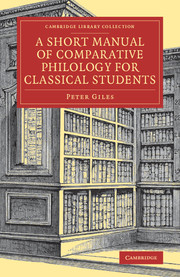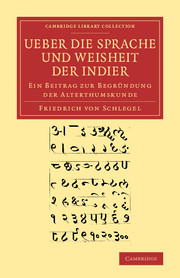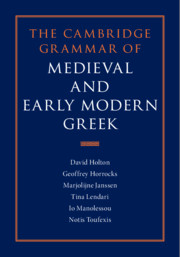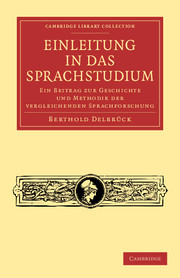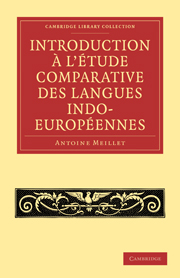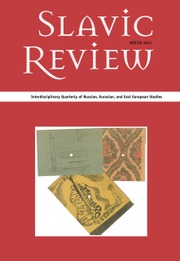A Short Manual of Comparative Philology for Classical Students
Peter Giles (1860–1935) spent most of his working life at Emmanuel College, Cambridge. In addition to obtaining first-class degrees at Aberdeen and Cambridge, he attended the lectures in Germany of the philologist Karl Brugmann, which resulted in this 1895 book, bringing to Britain the ideas of the Neogrammarians. As Giles explains in his preface, it is intended for 'Classical students who, without being professed students of Comparative Philology, desire some acquaintance with its principles as applied to Latin and Greek'. Part I discusses comparative philology and the Indo-European languages in general; Part II, the specifics of phonetics and phonology in Latin and Greek; and Part III deals with morphology. This useful guide was Giles' only book, but he contributed to the Cambridge Ancient History and the Cambridge History of India, and was the single most prolific contributor on language-related topics to the eleventh edition of the Encyclopaedia Britannica.
Product details
April 2018Paperback
9781108082105
594 pages
215 × 140 × 33 mm
0.64kg
Available
Table of Contents
- Preface
- Part I. General Principles:
- 1. What is philology
- 2. What is an Indo-Germanic language
- 3. How do Indo-Germanic languages differ from other languages
- 4. The principles of modern philology
- 5. Phonetics
- 6. Accent
- 7. Differences between English and the classical languages, and between English and other Germanic languages
- Part II. Sounds and their Combinations:
- 8. Indo-Germanic sounds
- 9. Attic Greek alphabet and pronunciation
- 10. Latin alphabet and pronunciation
- 11. History of the original Indo-Germanic sounds in Greek and Latin
- 12. On some combinations of consonants
- 13. On some other sound changes
- 14. Accent
- Part III. Words and their Combinations:
- 15. General principles of word formation
- 16. Noun morphology
- 17. Classification of nouns
- 18. Case suffixes
- 19. Pronominal declension
- 20. Uses of the cases
- 21. Fragments of cases
- 22. Stem formation in the nouns
- 23. The numerals
- 24. Verb morphology
- 25. The present formations
- 26. The future
- 27. The perfect
- 28. Past formations
- 29. The moods
- 30. Verbal nouns
- 31. Uses of the verb forms
- Appendices
- Indices.

